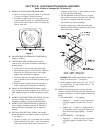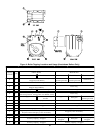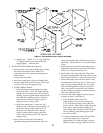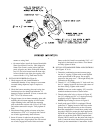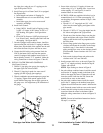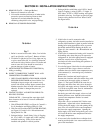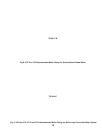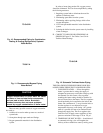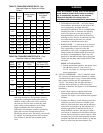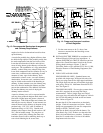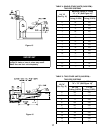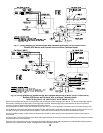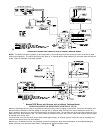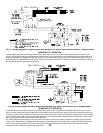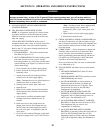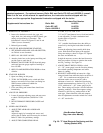
15
TABLE 3: TANKLESS HEATER DATA: Rear
Mounted Heater on Steam and Water
Boilers
TABLE 3A: TANKLESS HEATER DATA: Front
Mounted Heater on Water Boilers
WARNING
Install an automatic mixing valve at the tankless
heater outlet to avoid risk of burns or scalding
due to excessively hot water at the fixtures.
Adjust and maintain the mixing valve in
accordance with the manufacturer's instructions.
3. FLUSHING OF HEATER — All water contains
some sediment which settles on the inside of the
coil. Consequently, the heater should be
periodically backwashed. This is accomplished by
installing hose bibs as illustrated and allowing
water at city pressure to run into hose bib A,
through the heater, and out hose bib B until the
discharge is clear. The tees in which the hose bibs
are located should be the same size as heater
connections to minimize pressure drop.
4. HARD WATER — A water analysis is necessary
to determine the hardness of your potable water.
This is applicable to some city water and
particularly to well water. An appropriate water
softener should be installed based on the analysis
and dealer’s recommendation. This is not only
beneficial to the tankless heater but to piping and
fixtures plus the many other benefits derived from
soft water.
NOTE: STEAM BOILERS
a. During summertime operation, the normal water
line should be raised 1”, from 22-5/8” to
23-5/8” (see Figure 1C) for improved tankless
heater performance.
G. INSTALL SMOKEPIPE — The V7 should be vented
into a fireclay tile-lined masonry chimney or chimney
constructed from type L vent or a factory built chimney
that complies with the type HT requirements of
UL103. The chimney and vent pipe shall have a
sufficient draft at all times, to assure safe proper
operation of the boiler. See Figure 13 for recommended
installation.
1. Install a draft regulator (supplied with boiler)
following the instructions furnished with the
regulator. See Figure 14 for alternate draft regulator
locations.
2. Consider the chimney overall. Chimneys that have
a high heat loss may become less suitable as the
heat loss of the home goes down and the efficiency
of the boiler installed goes up. Most homes have a
chimney appropriate for the fuel and the era in
which the home was built. That may have been a
coal fired or an inefficient oil fired boiler built into
a home without insulation or storm windows. With
increasing fuel prices that home probably has been
insulated and fitted with storm windows so that the
heat loss of the home has been reduced. This
cold water with the hot. This prevents excessive
and possibly scalding hot water at the fixtures. In
addition, savings of hot water will be achieved
since the user will not waste as much hot water
while seeking water temperature to his liking.
Higher temperature hot water required by
dishwashers and automatic washers is possible by
piping the hot water from the heater prior to
entering the mixing valve. The mixing valve should
be “trapped” by installing it below the cold water
inlet to heater to prevent lime formation in the
valve.
Boiler
Model
Heater
No.
Heater Rating
(GPM)
Pressure Drop
Thru Heater (PSI)
V73 222 3 22
V74 222 3.5 22
V75 222 4 30.5
V76 222 4.5 33
V77
222 4.6 33
A54 5.5 36
V78
222 4.75 40
A54 6 39.5
V79
222 4.75 40
A54 6 39.5
Boiler
Model
Heater
No.
Heater Rating
(GPM)
Pressure Drop
thru Heater
(PSI)
Steam Water Steam Water
V713 V1-2 --- 3.25 --- 5.6
V73 V1-2 2.75 3 3.9 4.7
V714
V1-1 --- 3.5 --- 4.4
V1-2 --- 4 --- 8
V74 V1-2 3 3.25 4.7 5.6
V75 V1-2 3.25 3.5 5.6 6.4
V76 V1-2 3.75 3.75 7.2 7.2
V77 V1-2 3.75 4 7.2 8
V78 V1-2 4 4.5 8 9.8
V79 V1-2 4 4.5 8 9.8



